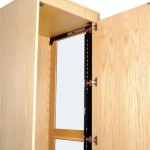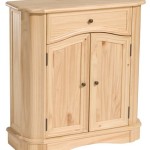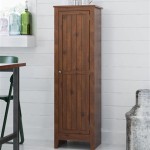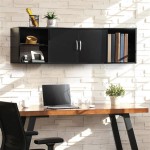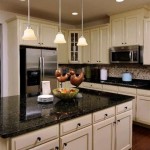Router Bits To Make Shaker Cabinet Doors Smooth
Shaker cabinet doors are a timeless design choice, valued for their clean lines and understated elegance. Achieving a smooth, professional finish on these doors, however, requires careful attention to detail and selection of the appropriate router bits. The router bits chosen directly impact the quality of the profile created and the overall smoothness of the door components. This article explores the types of router bits best suited for crafting shaker cabinet doors and the considerations for achieving a flawless finish.
The construction of a shaker cabinet door typically involves creating a frame consisting of four pieces – two stiles (vertical pieces) and two rails (horizontal pieces). These pieces are joined together, usually with a mortise-and-tenon joint or cope-and-stick method, to create a recessed panel in the center. The panel itself can be made from solid wood or plywood, depending on the desired aesthetic and budget. The router bits are crucial for shaping the profiles on the stiles and rails, as well as creating the recess to accommodate the panel.
Selecting the right router bits is not simply about finding a profile that looks aesthetically pleasing. It also involves considering the ease of use, the potential for tear-out (splintering of the wood), and the longevity of the bit itself. Carbide-tipped bits are generally preferred over high-speed steel (HSS) bits, as they maintain their sharpness for a longer period, especially when working with hardwoods. The geometry of the cutting edges also plays a significant role in the smoothness of the cut. A gradual shear angle, for example, can help to reduce tear-out and produce a cleaner surface.
Choosing Router Bits for Stiles and Rails
The profiles on the stiles and rails of shaker cabinet doors usually consist of a simple, clean design. Overly ornate profiles contradict the essence of the Shaker style. Several router bit options are well-suited for creating these profiles. One common choice is a matched rail and stile set. These sets are specifically designed to create a complementary profile on the rails and stiles, ensuring a seamless and consistent look throughout the door. The set typically includes two bits: one for shaping the inner edge of the stiles and another for shaping the inner edge of the rails. When using a matched set, it is essential to ensure that the bits are properly aligned and calibrated to avoid any misalignment in the final door assembly.
Another commonly used option involves using a cope-and-stick set. This set is similar to the matched rail and stile set, but it utilizes a different construction method. The cope-and-stick method involves routing a profile (the "stick" profile) on the stiles and a matching profile (the "cope" profile) on the rails. The cope profile creates a tenon that fits into a mortise that is automatically created in the sticking process. The advantage of using a cope-and-stick set is that the joint is typically stronger and more resistant to racking than a simple miter joint. It also allows for easier alignment and assembly of the door frame.
A simple roundover bit can also be used to create a subtle, softened edge on the stiles and rails. This option is particularly well-suited for projects where a minimalist aesthetic is desired. When using a roundover bit, it is important to carefully control the depth of cut to avoid creating an overly rounded edge. A light, consistent pass is generally preferred over a deep, aggressive cut. Multiple light passes are better than one heavy pass to prevent tear-out and achieve a smoother finish.
Ogee bits, especially those with a subtle curve, can add a touch of elegance to shaker cabinet doors without departing from the overall clean design. When using an ogee bit, it's crucial to proceed slowly and cautiously, especially when working with hardwoods. The complex shape of the ogee profile can be more prone to tear-out and require more careful attention to detail. As with roundover bits, multiple shallow passes are beneficial in preventing tear-out and burning of the wood.
Selecting Router Bits for the Panel Groove
In addition to shaping the stiles and rails, router bits are also used to create the groove that holds the center panel. This groove needs to be wide enough to accommodate the thickness of the panel and deep enough to allow for expansion and contraction of the wood with changes in humidity. A straight bit or a rabbeting bit are common choices for this purpose. A straight bit is a simple cutting tool. A rabbeting bit is a bit that cuts a rabbet (a recess along the edge of the material being cut).
A straight bit is the most straightforward option for creating the panel groove. Straight bits are available in various diameters and cutting depths, allowing for precise control over the size of the groove. When using a straight bit, it's important to ensure that the router is held firmly and guided smoothly along the edge of the workpiece. Any wobble or vibration can result in an uneven groove. Using a fence or a router table can help to maintain a consistent depth and width.
A rabbeting bit, with its built-in bearing, can also be used to create the panel groove. The bearing rides along the edge of the workpiece, ensuring a consistent depth of cut. Rabbeting bits are particularly useful when creating a groove that is flush with the edge of the frame. The bearing size determines the depth of the rabbet, so it is important to select a bit with the appropriate bearing size for the desired groove depth. A bearing should be selected to give the desired depth of reveal for the final panel. It may be necessary to buy a new bearing to change the depth of the rabbet.
For panels made from plywood, a smaller groove may be sufficient, as plywood is less prone to expansion and contraction compared to solid wood. However, it is still important to allow for a slight amount of clearance to prevent the panel from binding within the frame. The correct panel size is essential for a clean look and function of the final cabinet door.
Achieving a Smooth Finish with the Right Techniques
The selection of the right router bit is only part of the equation. Achieving a smooth, professional finish also requires employing proper routing techniques. The feed rate (the speed at which the router is moved across the workpiece) is a critical factor. A feed rate that is too slow can cause the bit to burn the wood, while a feed rate that is too fast can result in tear-out or vibration. The optimal feed rate will vary depending on the type of wood, the size of the bit, and the depth of cut. Experimentation and practice are often necessary to find the sweet spot.
Climb cutting, where the router is moved in the same direction as the rotation of the bit, can sometimes produce a cleaner cut, but it also poses a higher risk of the router "grabbing" the wood and causing a dangerous kickback. Conventional routing, where the router is moved against the rotation of the bit, is generally considered safer, but it may sometimes result in more tear-out. Whether climb cutting or conventional routing is necessary will depend on the tools, material, and situation.
Using a router table can significantly improve the accuracy and safety of routing operations. A router table provides a stable platform for the router and allows for the use of fences and other accessories to guide the workpiece. This can be particularly helpful when creating long, consistent profiles on the stiles and rails of shaker cabinet doors. A featherboard attached to the fence or table can help to keep the workpiece pressed firmly against the fence, ensuring a consistent depth of cut and reducing the risk of kickback.
Sharp router bits are essential for achieving a smooth finish. Dull bits tend to tear the wood fibers rather than cutting them cleanly. Regularly inspect the router bits for signs of wear and tear, and sharpen or replace them as needed. A honing stone or diamond file can be used to sharpen carbide-tipped bits, but it is important to follow the manufacturer's instructions carefully to avoid damaging the bit.
After routing, sanding is often necessary to remove any imperfections and further refine the surface. Start with a coarse grit sandpaper (e.g., 120-grit) to remove any major scratches or tear-out, and then gradually move to finer grits (e.g., 180-grit, 220-grit) to achieve a smooth, polished surface. Sand in the direction of the grain to avoid creating cross-grain scratches. A sanding block or orbital sander can be used to sand flat surfaces, while specialized sanding tools may be needed for intricate profiles.
The appropriate router bits, coupled with the right techniques, are essential for crafting shaker cabinet doors with smooth, professional finishes. Understanding the purpose of each bit and its suitability for different tasks allows for informed decisions. Careful attention to feed rates, safety precautions, and sanding techniques further contributes to achieving the desired aesthetic and quality.

Yonico 12249 Shaker 2 Bit Rail And Stile Router Set 1 Inch Shank

Yonico 3 Bit Raised Panel Cabinet Door Router Set Bevel 1 2 Shank 12350

Ams 262 4 Pc Cnc Solid And Insert Carbide Simulated Mdf Shaker Door Router Bit Pack 1 2 Inch Shank

Yonico Raised Panel Cabinet Door Ogee 1 4 In Shank Carbide Tipped Router Bit Set 3 Piece 12338q

Cnc Router Bits Set Cabinet Door Raised Panel 3 Bit Ogee 1 4 Inch Shank For Wood

Cabinet Door Edge Router Bits Making Industrial Quality Rattle Free From Amana Tool Carbide Tipped S

The Easiest Way To Diy Shaker Cabinet Doors Fun Home Building

Rail Stile Router Bit Shaker 2 Piece Set 1 Shank Valkyr Tools

Framed Door Routing Project Trend Projects Tool Technology

Xdengp Cove Raised Panel Router Bits 1 2 Shank For Cut 3 8 Inch Diameter Shaker Cabinet Door Making Frame Design Use With Rail And Stile Moulding Bit
Related Posts

